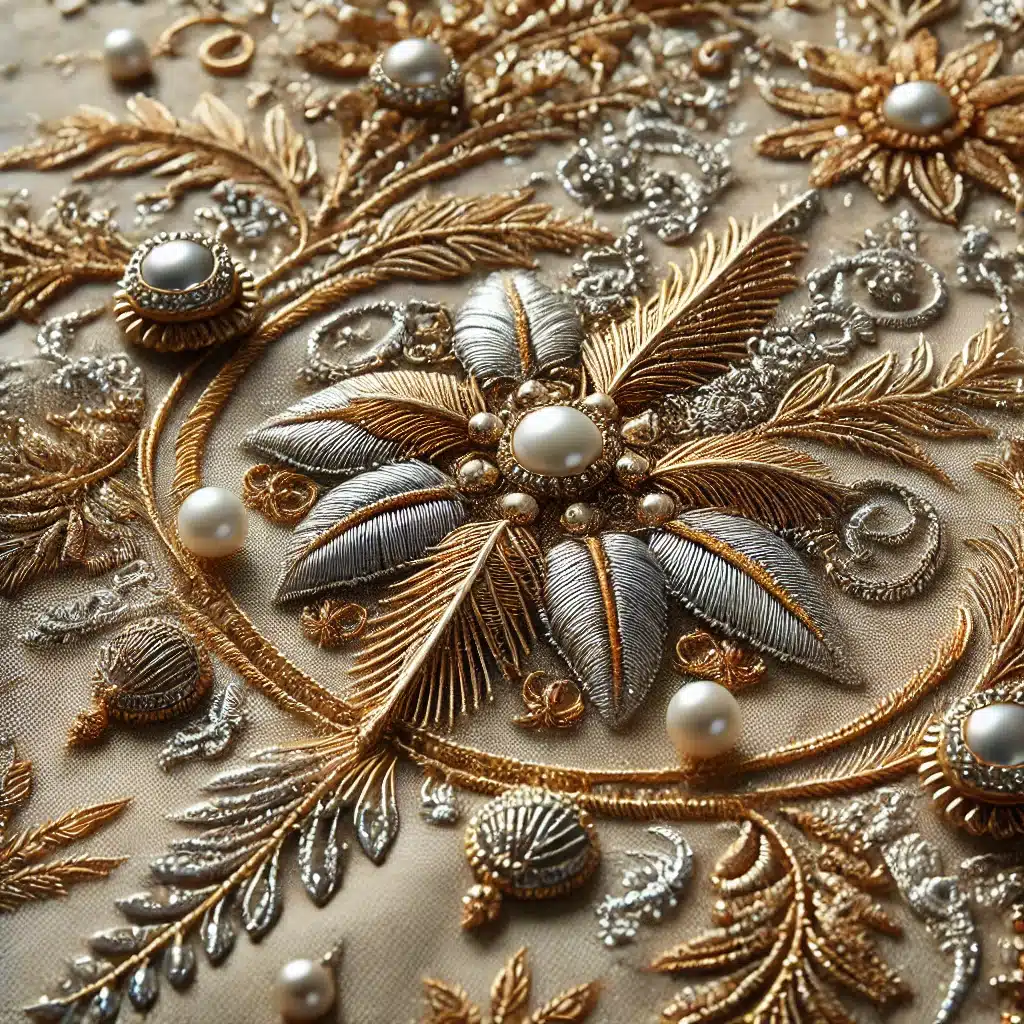
Table of Contents
Zardozi Wire or French Wire: A Timeless Craftsmanship
Zardozi wire, also known as French wire, is a fascinating element in the world of embroidery, deeply rooted in the cultural and artistic traditions of South Asia and the Middle East. This fine metallic thread has been a cornerstone in creating intricate designs for centuries, adorning royal garments, ceremonial attires, and even home décor. With its blend of elegance and durability, Zardozi wire holds an esteemed position in the realm of handcrafted textiles.
A Glimpse into History
The term “Zardozi” originates from the Persian words “zar” (gold) and “dozi” (sewing), translating to “gold embroidery.” This art form gained prominence during the Mughal era in India, when emperors such as Akbar supported its craft. French wire, often used interchangeably with Zardozi wire, refers to the metallic coiled wires that add texture and richness to embroidered designs. Historically, these wires were crafted using real gold and silver, making them a symbol of opulence and grandeur. Today, advancements in manufacturing have introduced more affordable alternatives, such as copper or brass wires plated with gold, silver, or other finishes.
The Craftsmanship Behind Zardozi Wire Embroidery
Zardozi embroidery is a meticulous process requiring immense skill and patience. Here’s a glimpse into how this magnificent art form is brought to life:
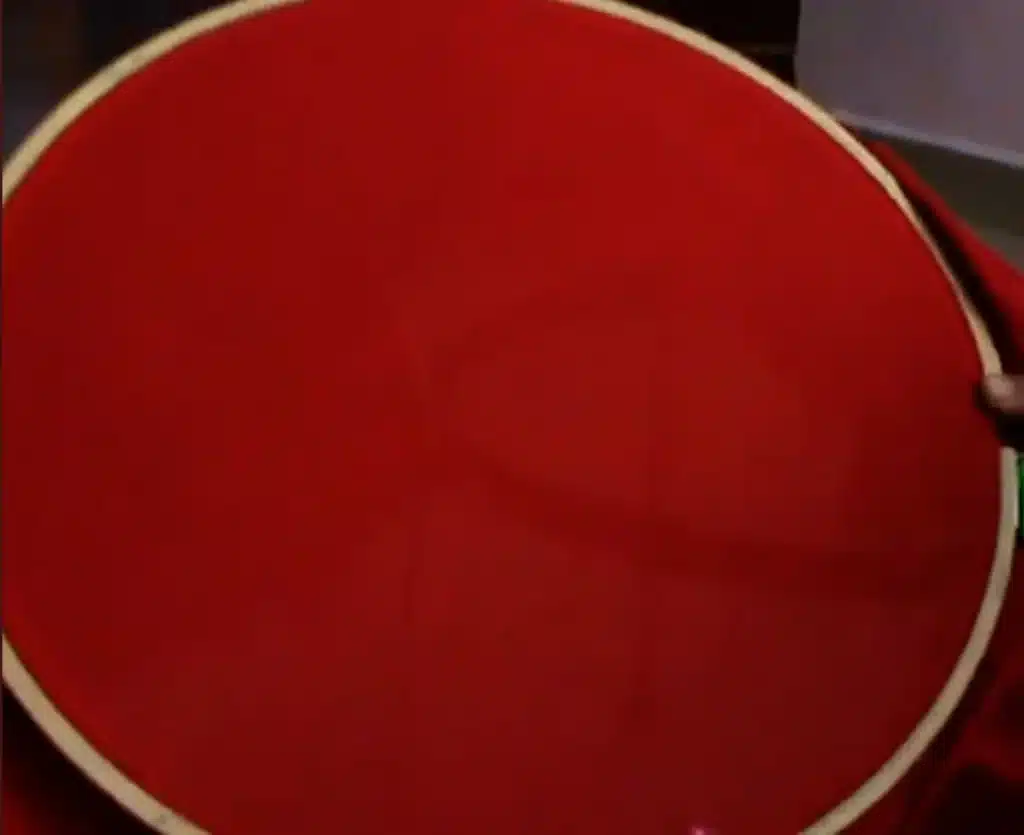
- Material Preparation: The base fabric, often velvet, silk, or satin, is tightly stretched over an embroidery frame. The Zardozi wire or French wire, along with other embellishments like sequins, beads, and pearls, is prepared.
- Design Transfer: The desired pattern is first drawn on tracing paper and then transferred onto the fabric using chalk or powdered pigments.
- Embroidery Process: Using a specialized needle, artisans sew the metallic wires onto the fabric, either directly or in combination with other materials. The wires are shaped and manipulated to create intricate motifs such as floral patterns, geometric designs, or elaborate borders.
- Final Touches: Once the embroidery is complete, the fabric undergoes careful finishing to enhance its appearance and ensure durability.
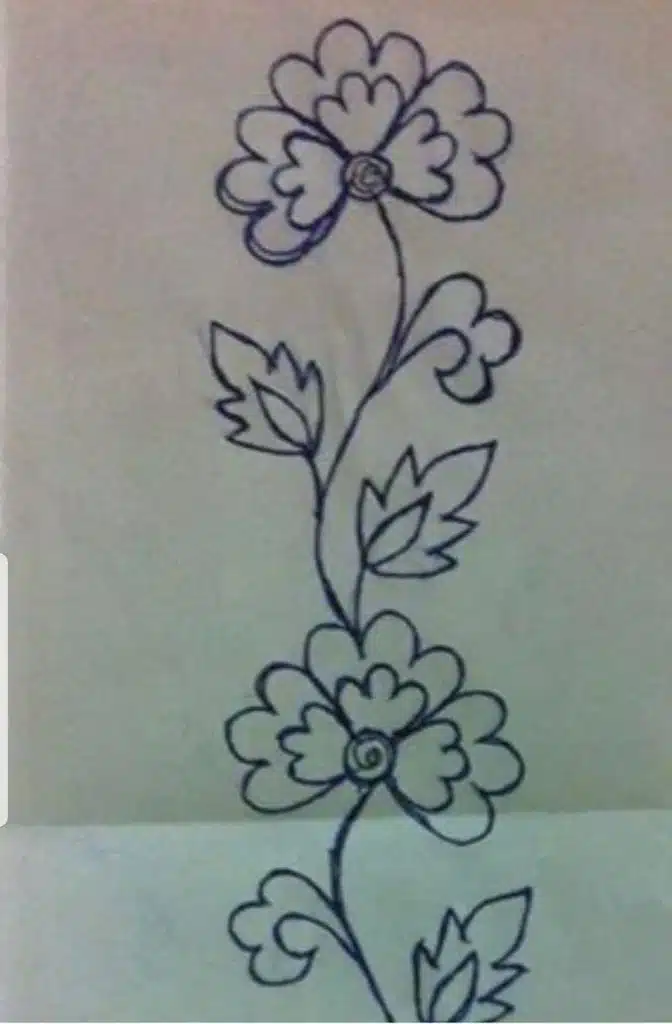
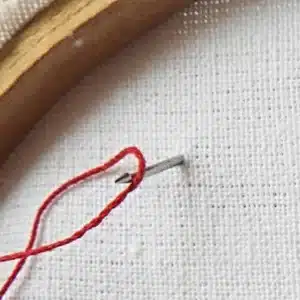
Applications of Zardozi Wire
Zardozi wire finds application in various domains, showcasing its versatility:
- Fashion: Zardozi embroidery enhances bridal wear, festive outfits, and high-fashion garments. Its shimmering elegance makes it a popular choice for wedding lehengas, sherwanis, and sarees.
- Accessories: Handbags, clutches, and footwear adorned with Zardozi wire exude a royal charm. These statement pieces are perfect for special occasions.
- Home Décor: Cushion covers, wall hangings, and table runners featuring Zardozi wire designs bring an element of luxury to interiors.
- Religious and Ceremonial Items: In many cultures, Zardozi embroidery is used to embellish prayer rugs, altar cloths, and ceremonial costumes.
French Wire: The Modern Take
While the term Zardozi wire is steeped in tradition, French wire offers a modern twist. French wire is often associated with jewelry-making, where it is used as a coiled protector for thread in beading projects. The wire prevents fraying and adds a professional finish to necklaces and bracelets. The adaptability of French wire makes it a favored choice for contemporary designers seeking to combine traditional techniques with modern aesthetics.
Why Choose Zardozi Wire or French Wire?
Whether you’re an artisan, a designer, or an enthusiast of handcrafted items, here are some reasons to embrace Zardozi wire:
- Unmatched Elegance: The metallic sheen and intricate designs created with Zardozi wire elevate the aesthetic appeal of any piece.
- Durability: Despite its delicate appearance, Zardozi wire is robust and maintains its shape and shine over time.
- Cultural Heritage: Incorporating Zardozi embroidery into your work pays homage to a rich artistic tradition.
- Versatility: From traditional outfits to modern jewelry, Zardozi wire adapts seamlessly to various styles and applications.
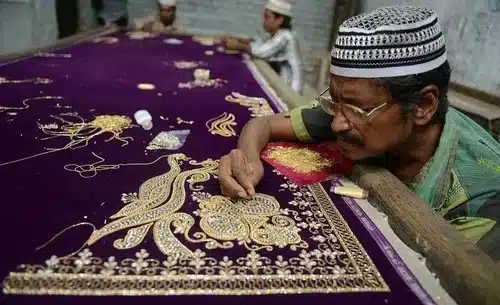
Caring for Zardozi Embroidery
To ensure the longevity of items adorned with Zardozi or French wire embroidery, it’s essential to handle them with care:
- Storage: Store embroidered garments in a cool, dry place away from direct sunlight to prevent tarnishing.
- Cleaning: Spot-clean using a soft cloth and mild detergent. Avoid machine washing or heavy scrubbing, as this can damage the wires.
- Handling: Minimize friction to preserve the integrity of the embroidery. When ironing, use a protective layer of fabric and avoid direct contact with the wires.
Sustainability and Ethical Considerations
As the demand for handmade embroidery grows, it’s important to consider the artisans behind the craft. Supporting ethically sourced and fairly traded Zardozi wire ensures that skilled craftsmen receive fair wages and work in safe environments. Additionally, opting for high-quality materials contributes to sustainable practices by reducing waste and extending the lifespan of the final product.
The Future of Zardozi Wire and French Wire
In an era where fast fashion dominates, Zardozi wire stands as a testament to the enduring appeal of craftsmanship. Modern designers are finding innovative ways to incorporate this traditional art into contemporary designs, ensuring its relevance for future generations. Whether through fusion wear, jewelry, or bespoke home décor, Zardozi wire continues to captivate with its timeless allure.
Conclusion
Zardozi wire or French wire is more than just a material; it’s a symbol of artistic excellence and cultural heritage. Its journey from royal courts to modern ateliers reflects its versatility and enduring charm. At Aari Needles, we celebrate the beauty of this craft and invite you to explore the world of Zardozi embroidery. Whether you’re a seasoned artisan or a curious beginner, the magic of Zardozi wire awaits your creative touch.


